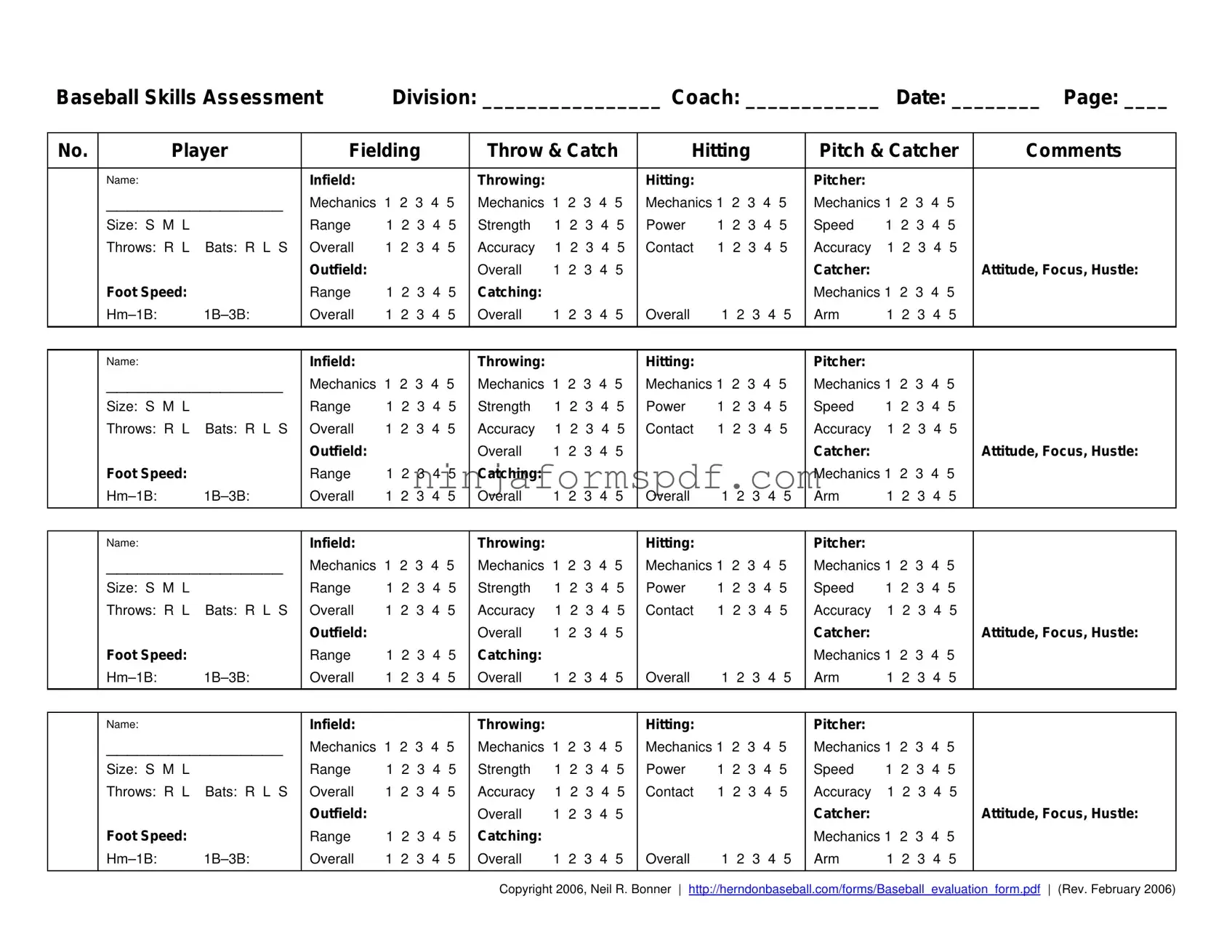The Baseball Skills Assessment Form has close similarities with a Soccer Skills Assessment Document, commonly used in youth and amateur leagues to gauge athletes' abilities across various areas such as dribbling, passing, shooting, and teamwork. Like its baseball counterpart, which segments players’ skills into batting, throwing, and catching among others, the soccer form uses numerical values to quantify skill levels, facilitating a transparent selection process for team composition. Both forms aim to identify strengths and areas for improvement, ensuring players are positioned to capitalize on their abilities while encouraging development in less strong areas.
An Employee Performance Review Form used in various workplaces also mirrors the structure and intent of the Baseball Assessment Form. In an employment context, employees are evaluated on their competencies, achievements, and areas needing improvement similar to how players are assessed on their fielding, hitting, and pitching. Both forms serve as tools for development, offering a standardized approach to identifying areas of excellence and those requiring attention, and are crucial in planning future training and development activities.
Educational Assessment Forms that teachers use to evaluate student progress in courses or specific subjects share a resemblance with the baseball form. These educational assessments often include metrics for evaluating understanding, participation, and skill application, akin to how athleticism, technique, and sportsmanship are measured in the baseball evaluation. Both forms are integral to developing a tailored approach that supports individuals in enhancing their strengths and addressing their weaknesses.
The Talent Audition Evaluation Form, utilized in performing arts to judge participants' skills in areas such as acting, singing, or dancing, parallels the Baseball Skills Assessment Form by offering structured and objective criteria for evaluating performance. Just as baseball players are scored on their technical and physical abilities, performers are assessed on criteria such as pitch, rhythm, expression, and stage presence. The objective is to identify individuals with the highest potential for success in their respective fields.
Lastly, the Customer Service Evaluation Form, widely used in retail and service industries to appraise staff interaction with customers, reflects the player assessment form by emphasizing the importance of specific skill sets for success. In customer service, employees are evaluated on communication, problem-solving, and efficiency, much like baseball players are reviewed on their sports-related competencies. Both forms aim to pinpoint areas where targeted training can elevate overall performance and effectiveness.

